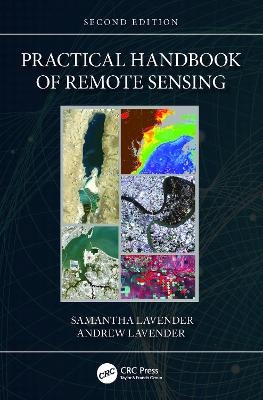
Practical Handbook of Remote Sensing
CRC Press (Verlag)
9781032214337 (ISBN)
The number of Earth observation satellites launched in recent years is growing exponentially, along with the datasets they gather from free-to-access and commercial providers. The second edition of Practical Handbook of Remote Sensing is updated with new explanations and practical examples using the Copernicus satellite data and new versions of the open-source software. A new chapter and new applications have also been added. Thoroughly revised, the handbook continues to be a practical "how-to" remote sensing guide for those who want to use the technology, understand what is available, how to access it, and answer questions about our planet, but do not necessarily want to become scientific experts.
Samantha Lavender, PhD, has more than 30 years of remote sensing research experience, focusing on using Earth observation to help answer questions about our planet’s resources and behavior. After earning a PhD, she focused on the remote sensing of the Humber plume using airborne data, and was a researcher at the Plymouth Marine Laboratory and then a lecturer at the University of Plymouth. In 2012, with Andrew, she formed Pixalytics Ltd and is the Managing Director of this commercial remote sensing company. Dr. Lavender is also an Associate Editor for Remote Sensing of Environment, and has an ongoing active interest in research alongside widening the community using remotely sensed data. She has previously served the community as chairman of the British Association of Remote Sensing Companies (BARSC), chairman of the Remote Sensing and Photogrammetry Society (RSPSoc), and Treasurer for the European Association of Remote Sensing Laboratories (EARSeL). Andrew Lavender is a novice remote sensor. Having founded Pixalytics Ltd alongside his wife, he primarily focuses on the company’s administrative and social media activities. Andrew occasionally undertakes modest aspects of simple remote sensing to produce marketing images, and acts as the ‘future reader’ of the book, including testing all of the exercises. Outside of Pixalytics, he is a short story and flash fiction writer and teaches creative writing.
1. What is Remote Sensing? 2. How Does Remote Sensing Work? 3. Data Available from Remote Sensing 4. Basic Remote Sensing Using Landsat Data 5. Introduction to Image Processing 6. Practical Image Processing 7. Geographic Information System and an Introduction to QGIS 8. Urban Environments and Their Signatures 9. Landscape Evolution 10. Inland Waters and the Water Cycle 11. Coastal Waters and Coastline Evolution 12. Atmospheric Gases and Pollutants 13. Where to Next?
| Erscheinungsdatum | 05.04.2023 |
|---|---|
| Zusatzinfo | 2 Tables, black and white; 1 Line drawings, color; 7 Line drawings, black and white; 76 Halftones, color; 25 Halftones, black and white; 77 Illustrations, color; 32 Illustrations, black and white |
| Verlagsort | London |
| Sprache | englisch |
| Maße | 152 x 229 mm |
| Gewicht | 200 g |
| Themenwelt | Naturwissenschaften ► Geowissenschaften ► Geografie / Kartografie |
| Naturwissenschaften ► Geowissenschaften ► Geologie | |
| Technik ► Bauwesen | |
| Technik ► Umwelttechnik / Biotechnologie | |
| Weitere Fachgebiete ► Land- / Forstwirtschaft / Fischerei | |
| ISBN-13 | 9781032214337 / 9781032214337 |
| Zustand | Neuware |
| Informationen gemäß Produktsicherheitsverordnung (GPSR) | |
| Haben Sie eine Frage zum Produkt? |
aus dem Bereich


